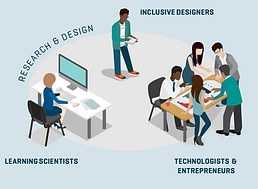LABORATORY SCHOOLS: How School Communities Can Power Human-Centered Design and Inclusive Innovation


Laboratory schools bring together teams of students, families, educators, instructional leaders, researchers, and designers to support directed R&D and generate innovative solutions to pressing challenges. This guide aims to 1) increase awareness of the potential role of laboratory schools in reimagining the future of education and 2) to give educators the tools they need to apply the practices of laboratory schools, which we hope will deliver the benefits of these approaches to more school communities.

In pulling insights from our experience as a laboratory school, Brooklyn LAB has created a suite of actionable resources that any motivated school can use to generate and modify relevant,
evidence-based solutions to longstanding problems in education that have been amplified by the pandemic.
The specific strategies and broader conceptual recommendations described here can help schools equitably engage students, families, educators, and experts to ensure that solutions meet real needs.
This guide offers numerous examples, but it does not aim to be prescriptive, nor do the insights highlighted aim to be exhaustive. Rather, as schools explore a laboratory school approach to
problem-solving, we invite them to regularly reference and return to this guide as they adapt certain high-leverage strategies to meet the unique needs of their communities.
Additionally, this guide is designed to be a resource for those working to build standing infrastructure for applied education R&D, including federal policymakers, researchers, and philanthropists, as
they consider how to best advance actionable knowledge within the U.S. educational landscape. We hope these stakeholders use this guide to deepen their understanding of the laboratory school
approach to creative problem-solving and the great potential it has to help promote necessary, systemwide improvements.
We are excited to share the work led by Brooklyn LAB through the EquityByDesign.org initiative, and hope others are encouraged to try these approaches during the pandemic and into the future.
.png)

